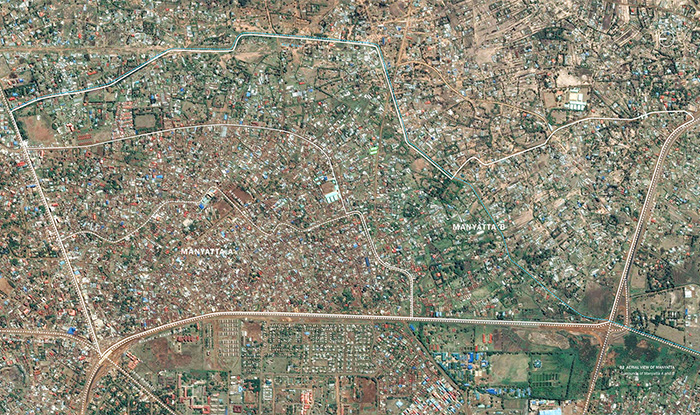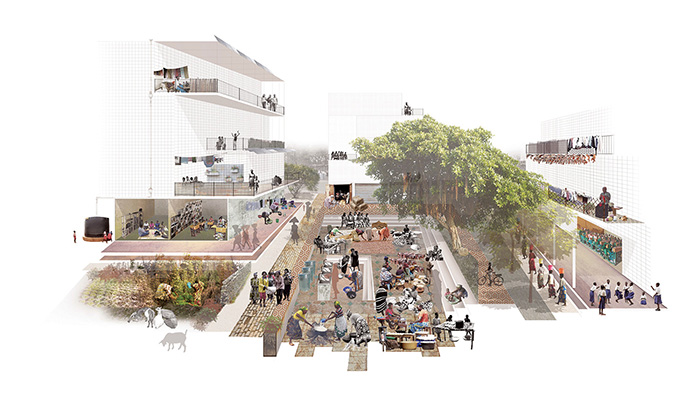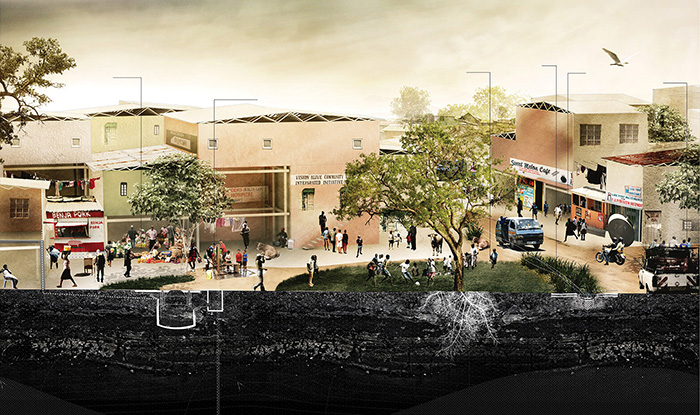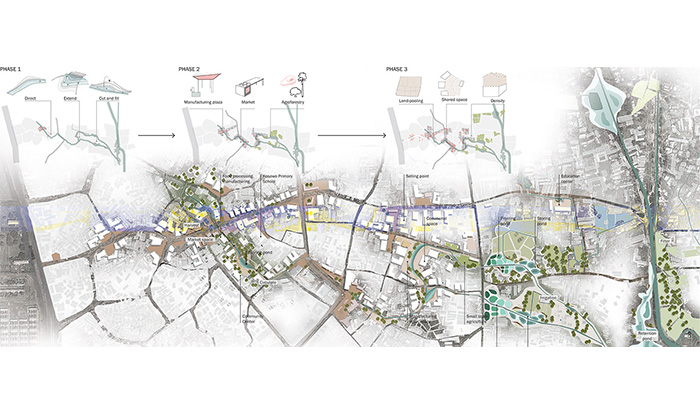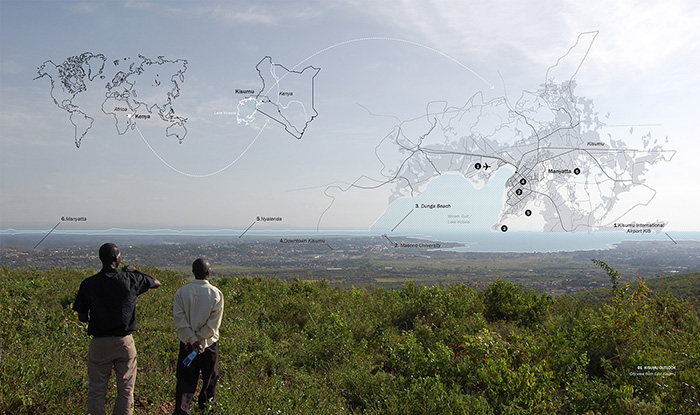Spatial Strategies for Manyatta: Designing for Growth
This project looks at the future of Manyatta, the largest informal settlement in the city of Kisumu, Kenya, which shares its potential with many other newly urbanizing places, and which is characterized by development pressures, economic transformation, and rapid population growth. Analyses of the site concentrate on Manyatta’s enormous energy in terms of human capital and potential for growth as a city of 60,000 people that had experienced no planning.
This work proposes a “pilot planning” rather than a “master planning” strategy to provide flexibility in addressing short term strategic targets without compromising long term options, with particular emphases on infrastructural development issues. Within this sensibility, several potential pilots were explored and assembled comprising six “base elements:” gender, land, public space, waste, infrastructure, and economy.
Engaged strategies recognize that all six base elements may not necessarily be addressed at once, but are interrelated around specific pilot project proposals. The six elements remain as a fundamental metric, however, throughout the discovery process and toward future planning strategies.
The publication Spatial Strategies in Manyatta: Designing for Growth has been made possible through the collaboration with the Spring Semester Urban Design Studio at Columbia University’s Urban Design Program at the Graduate School of Architecture, Planning and Preservation (GSAPP) with the support and collaboration of the Earth Institute’s Millennium City Initiative (MCI), the Catholic Organisation for Relief and Development Aid (CORDAID), and Maseno University Kisumu Campus.
Editors: Susan M Blaustein, Victor Body-Lawson, Petra Kempf, Geeta Mehta, Richard Plunz, Maria Paola Sutto
Managing Editors and Designers: Priscila Coli, Kirk Finkel
Spatial Strategies for Manyatta: Designing for Growth publication



